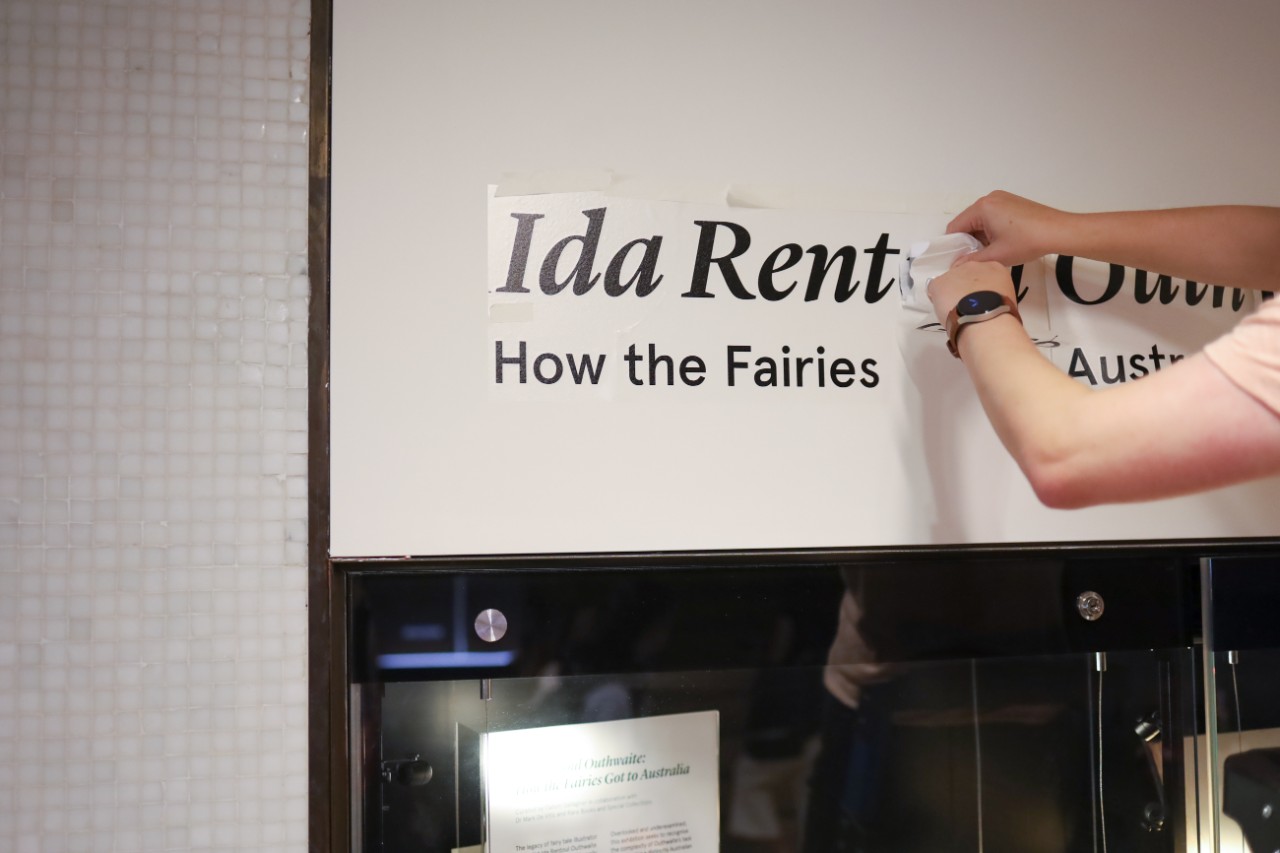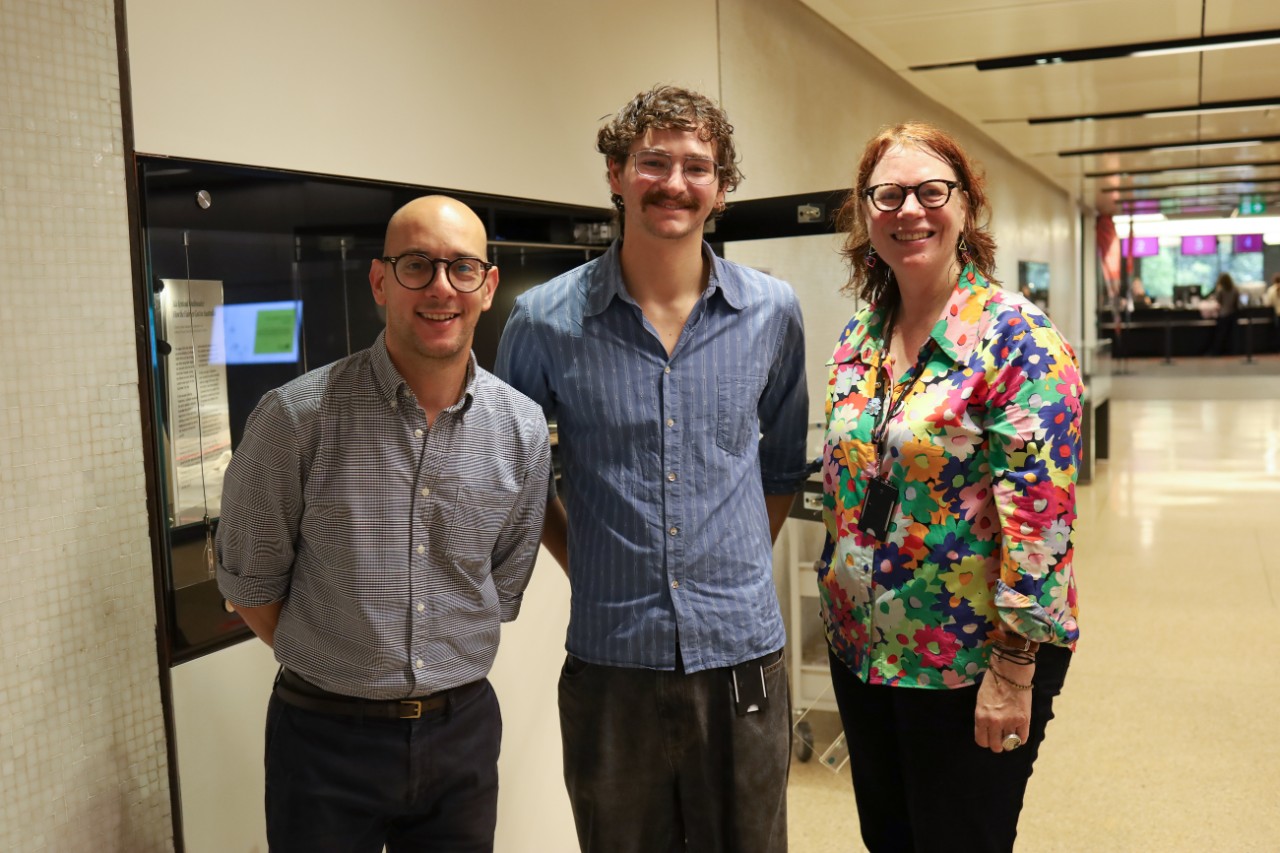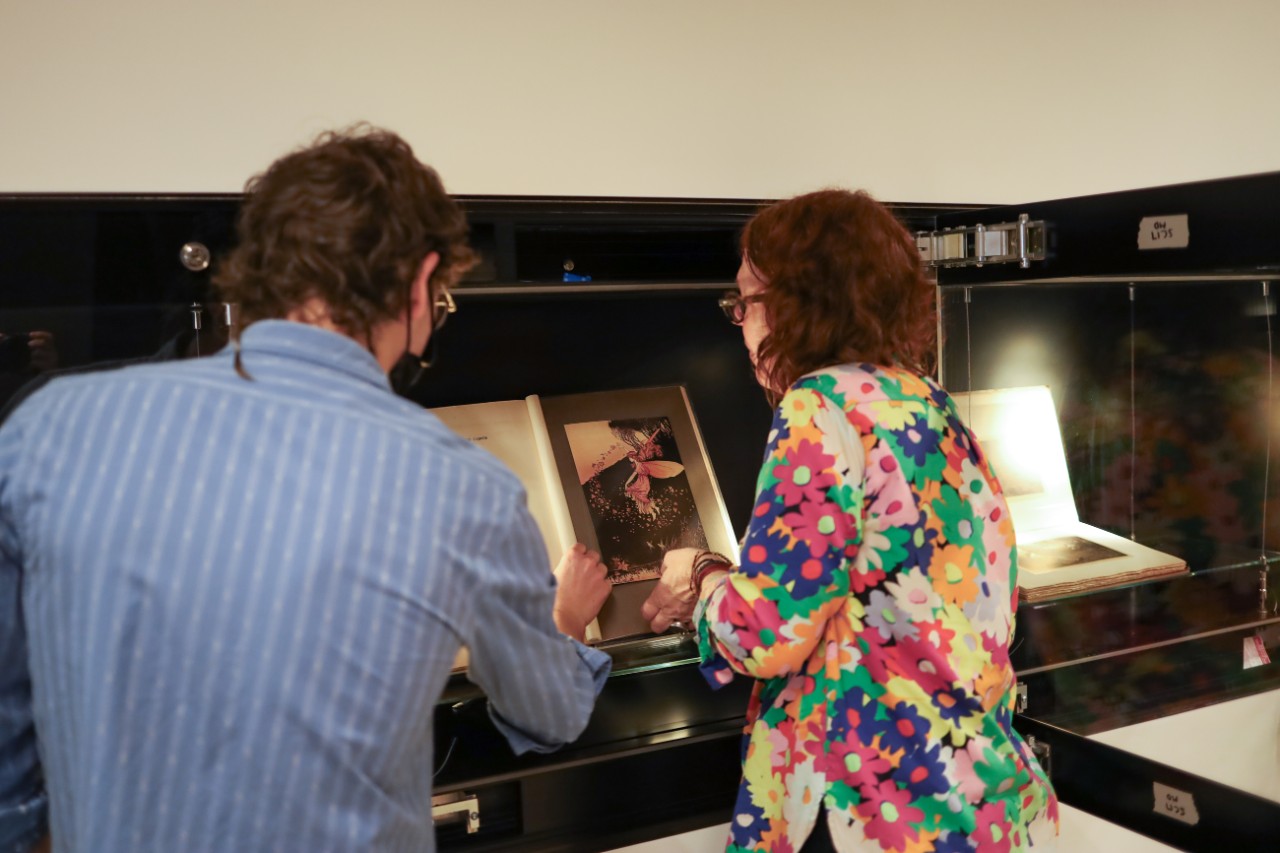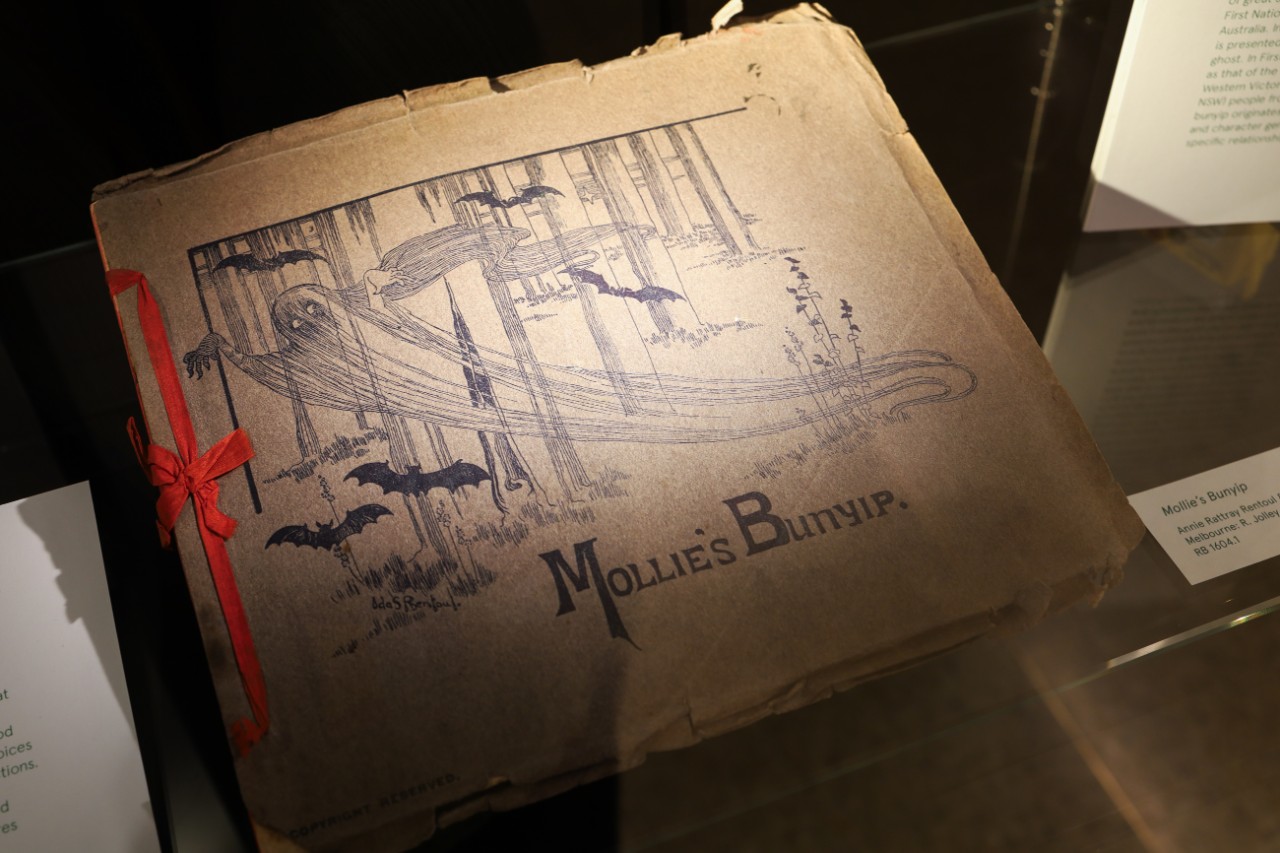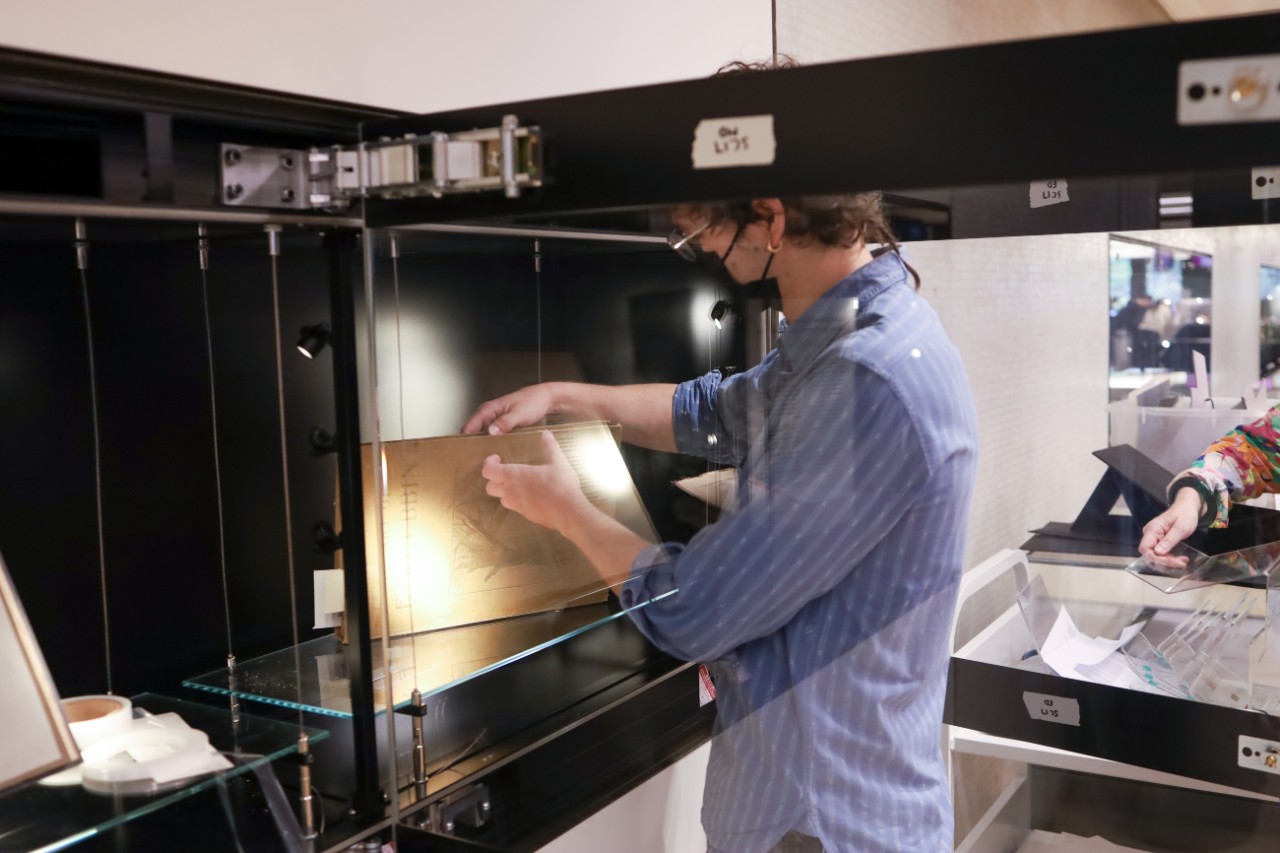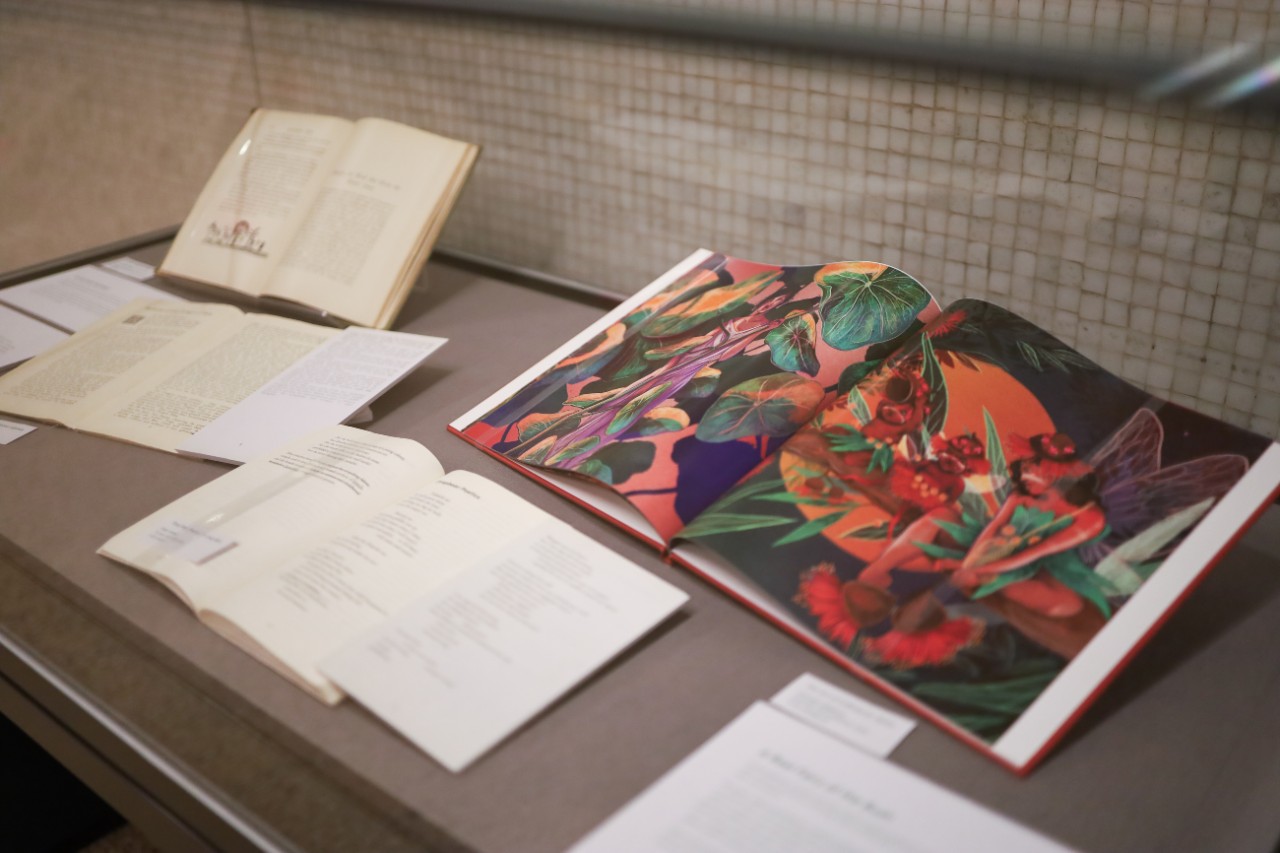Always was, always will be Aboriginal land.
The University of Sydney Library acknowledges that our buildings, collections, and practices exist on unceded Aboriginal lands. We recognise the diversity and knowledges of the Aboriginal and Torres Strait Islander staff and students across all the lands the University stands on, and respect the ongoing connection Aboriginal people have to these lands, their cultural practices, knowledge systems and histories. We pay our respects to their Elders, past and present, who have handed down custodianship to each generation for more than 60,000 years.
Money, J. (2021). Yilabara (Now). Filmed on Gadigal Country. Commissioned by the University of Sydney Library
'Ida Rentoul Outhwaite: How the Fairies Got to Australia' exhibition
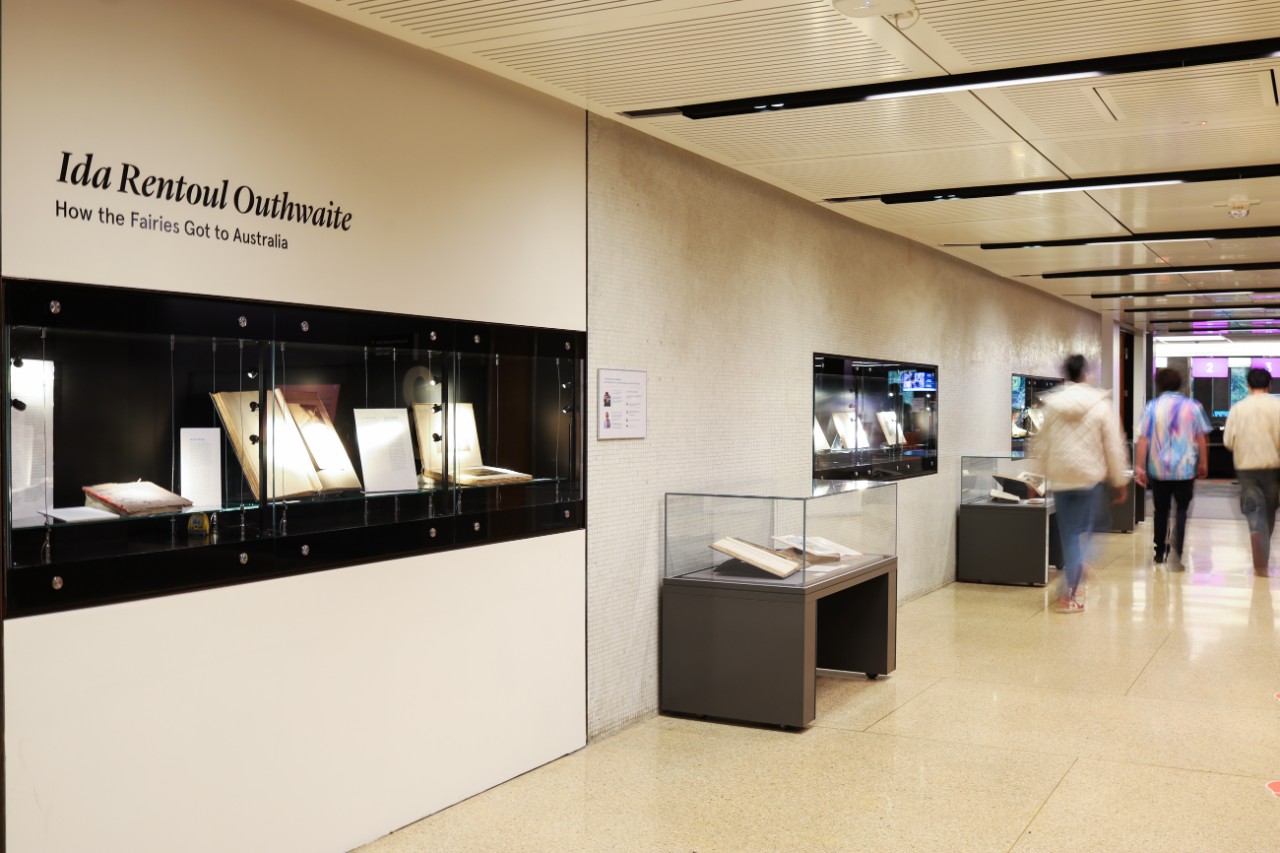

image
"Beneath a shimmering surface of familiar fantasy Outhwaite’s work contains a complexity of style and subject that deserves to be revisited as we consider Australian art history and identity today.”
Filled with beauty, the fairytale world of Australian artist Ida Rentoul Outhwaite (1888-1960) was much loved in her lifetime. Working with watercolour and ink, Outhwaite’s distinct, decorative line work depicted mythical creatures in Australian bushland settings in highly popular children's books and exhibitions.
Whilst Outhwaite may no longer be a household name, during her lifetime her illustrations defined a national desire for an ‘Australian’ fairy tale in the early 20th century post-Federation era. Her highly decorative aesthetic, which uniquely wove together European folklore and an antipodean setting, was the driving force behind her success. Outhwaite's work won her local and international acclaim. From 1916 to 1933, Outhwaite held annual solo exhibitions, including exhibits in Paris and London, placing her amongst the most successful Australian artists at the time. Queen Mary herself purchased Outhwaite's work from a London exhibition in 1920.
Despite the admiration her work generated during her lifetime, Outhwaite's legacy is no longer as commonly known as her contemporaries such as May Gibbs and Frederick McCubbin. This exhibition seeks to introduce Outhwaite's work to new audiences and recognise the ingenuity and complexity of her work. She challenged the highly masculine national image of bush life through the development of her unique style, influenced by avant-garde movements like art nouveau, and sketched out a place for women and children in the bush.
Reflective of their time, the imagery can also be read through a wider colonial artistic discourse. As we revisit Outhwaite’s work, we can re-examine how these fairies and their European folklore tropes came to be crafted in an Australian context and the complex legacies they now hold. What does an Australian fairy look like and where do fairies belong in our world today?
Ida Rentoul Outhwaite: How the Fairies Got to Australia
Fisher Library, level 3
University of Sydney
Camperdown
On display until 6 July 2025
About the curators
This exhibition was curated by Callum Gallagher in collaboration with Dr Mark De Vitis and Rare Books and Special Collections.
- Callum Gallagher is an emerging arts writer, curator and art historian living and working on unceded, stolen Gadigal land. He received a Bachelor of Arts with First Class Honours in Art History in 2023, with his thesis entitled Imaginary Roots: Art Nouveau and the Illegitimate Mythologies of Australia. His current research interests lie in unsettling colonial art histories.
- Dr Mark De Vitis is a lecturer in Art History at the University of Sydney. His research is focused on material culture, applying art historical methodologies of close analysis to neglected objects, and is currently writing on a bedroom suite made in San Francisco in the 1880s. His teaching includes courses on fashion studies at undergraduate level, and in the Master of Art Curating program he helps students learn how to work interpret works of art for different museum audiences.
Image 1: Dr Mark De Vitis, Callum Gallagher, Anne Goodfellow (Cultural Collections Librarian)
About Rare Books and Special Collections
The Library holds one of Australia’s largest rare books and special collections, with over 300,000 items. From Medieval manuscripts to recent literary highlights, the Library continues to collect items with academic research and teaching potential.
These collections are available to University of Sydney academics and students to view, research and teach with. If you have an enquiry, please contact: cultural.collections@usyd.libanswers.com.
We also welcome the public to view and study our collections, and offer a free Rare Books and Special Collections Community ID. Find out more about viewing items from special collections.
If you are unable to visit our collections in-person, you can also book a Virtual Reading Room session, or explore thousands of digitised photos, illustrations, documents, magazines and more on our Digital Collections website and our Google Arts & Culture page.
